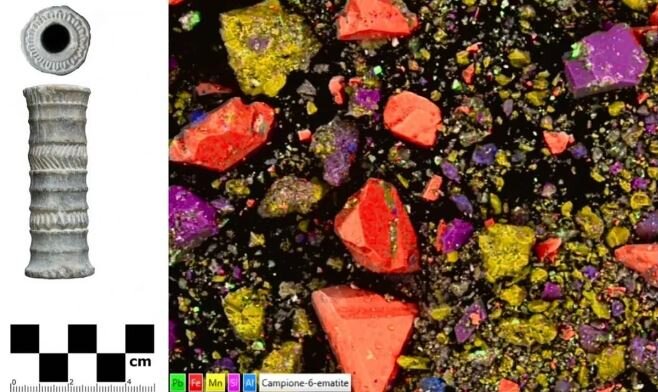Cosmetic dating back 3,600 years unearthed in Iran

In an enthralling revelation that bridges the chasm between the modern world and the distant past, archaeologists have unearthed a 3,600-year-old artifact in the Jiroft region of southeastern Iran.
This Stone Age relic, published in the journal Scientific Reports on February 1st, is none other than the oldest known red lipstick, dating back to the Bronze Age (between 2000 B.C. and 1600 B.C.).
The artifact, a chlorite vial containing a deep red cosmetic preparation, was discovered amidst a trove of ancient relics that had been looted from an ancient graveyard and later returned to a local museum following a flood in 2001. The vial's slender shape, reminiscent of contemporary lipstick tubes, suggests it was designed to be held in one hand along with a copper or bronze mirror, as depicted in an ancient Egyptian drawing.
Upon meticulous analysis under a microscope, researchers identified the mineral components of the reddish substance to be hematite, darkening agents, quartz particles, and plant wax. This composition bears a striking resemblance to contemporary lipstick recipes, hinting at the sophistication of ancient Iranian makeup techniques.
The presence of hematite, a mineral known for its intense red color, and quartz particles, which may have been used for a shimmering effect, speaks volumes about the aesthetic sensibilities of the people who lived in this region millennia ago. Moreover, the inclusion of plant wax as a binding agent reflects an understanding of cosmetic chemistry that is surprisingly modern.
This discovery aligns with the well-documented tradition of cosmetology in ancient Iran, which also included the use of light-colored compounds for foundation or eyeshadow and black kohl for eyeliners. The sophistication of these makeup techniques suggests a complex society with well-defined social hierarchies and aesthetic norms.
The research team, comprising Nasir Eskandari, Eugenio De Carlo, Federico Zorzi, Stefano Dall'Acqua, Claudio Furlan, Gilberto Artioli, and Massimo Vidale, highlights the long history of cosmetic use and the cultural significance of makeup in ancient societies. This finding not only enriches our understanding of the past but also underscores the timeless human desire to adorn and present ourselves in ways that reflect our identity and social status.
Today, as we delve into the world of makeup, experimenting with various shades and textures, it's worth pausing to appreciate the legacy of those who came before us. From the ancient Egyptians who lined their eyes with kohl to the women of the Bronze Age who painted their lips with hematite-infused pigments, the art of adornment has been a constant companion throughout human history.
As we marvel at the sophistication of this ancient lipstick, let us also remember the stories it tells - stories of human ingenuity, aesthetic sensibility, and the enduring quest for beauty. In many ways, this small vial of red pigment is more than just a relic of the past; it's a testament to the enduring power of self-expression and the timeless allure of beauty.
In the grand tapestry of human history, the threads of continuity often go unnoticed. But every once in a while, a discovery like this ancient lipstick reminds us of the connections that bind us to our past. As we continue to explore the world around us, may we always find joy in unraveling these connections and appreciating the richness of our shared human heritage.
(Source: BNN Breaking)
Leave a Comment